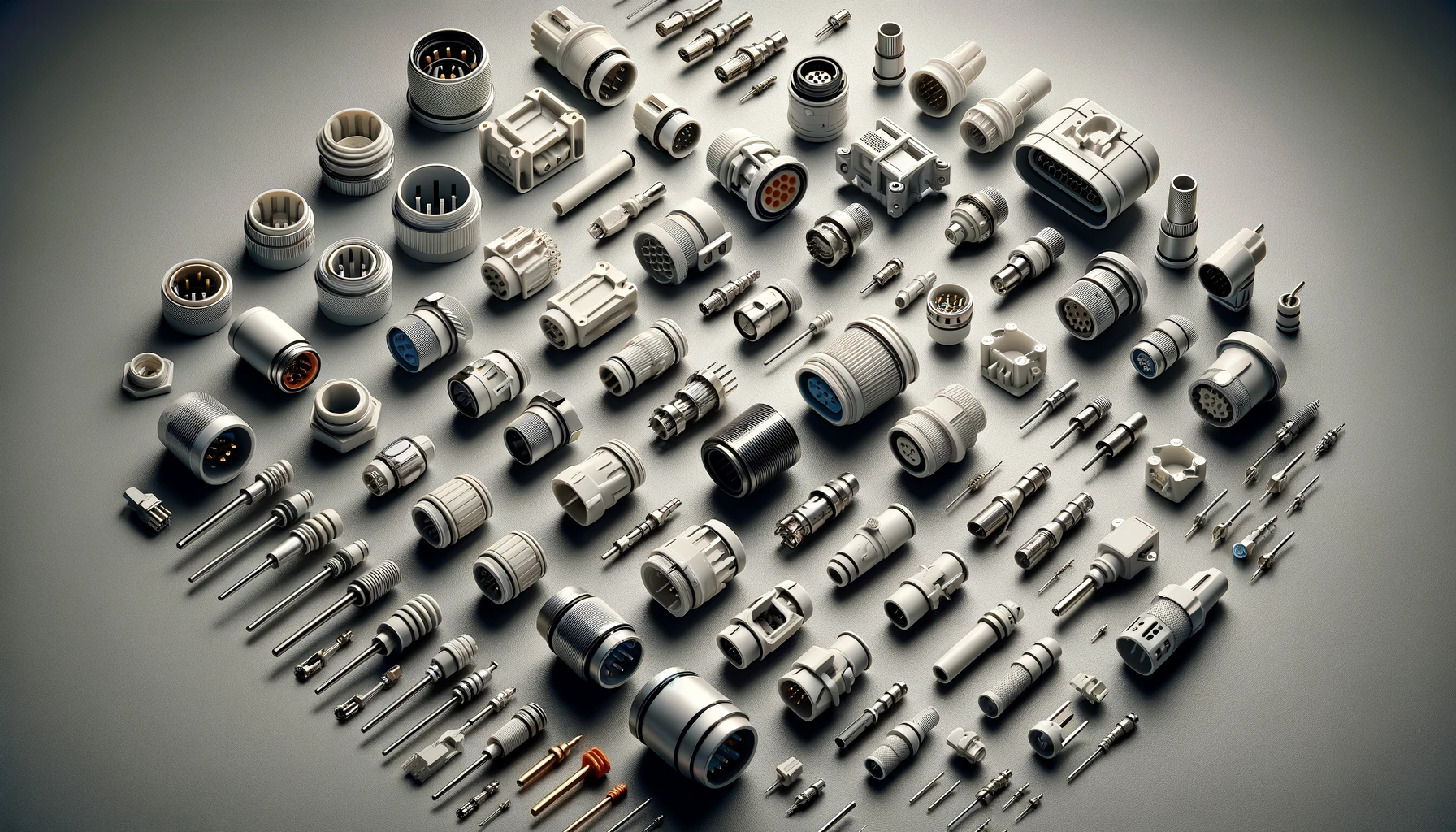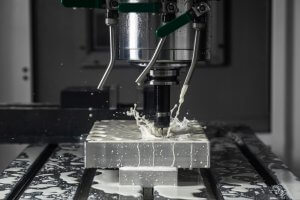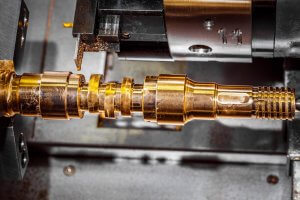Introduction
The art of CNC machining has become indispensable in the fabrication of custom connectors, components pivotal in numerous industries for their ability to ensure reliable and efficient electrical and data connections. This intricate process, however, is fraught with challenges, ranging from the selection of appropriate materials and maintaining tool integrity to achieving unparalleled precision in complex geometries. The advent of rapid prototyping further compounds these challenges, demanding not just precision but also agility in the manufacturing process. This article delves into these multifaceted challenges, offering insights into the solutions that pave the way for innovation and excellence in CNC machining of custom connectors.
China Online CNC Machining Service
you can try to submit processing requirements such as “certain parts of custom connectors” through the Internet and get online cnc machining quote.
Material Selection for Precision and Durability
The first step in ensuring the success of CNC machined custom connectors lies in the judicious selection of materials. The choice of material not only influences the machining process but also determines the performance and longevity of the final product. When selecting materials for custom connectors, considerations such as electrical conductivity, corrosion resistance, strength-to-weight ratio, and cost must be balanced.
Material Considerations
- Aluminum 6061: Known for its excellent machinability, good strength, and corrosion resistance. Ideal for connectors that require a good strength-to-weight ratio.
- Stainless Steel 304: Offers excellent corrosion resistance and strength, making it suitable for connectors used in harsh environments.
- Titanium Grade 5: Known for its high strength, lightweight, and exceptional corrosion resistance, albeit with more challenging machinability.
Data Table: Properties of Materials
| Material | Density (g/cm³) | Melting Point (°C) | Thermal Conductivity (W/mK) | Machinability Rating |
|---|---|---|---|---|
| Aluminum 6061 | 2.7 | 660 | 167 | Excellent |
| Stainless Steel 304 | 8.0 | 1450 | 16.2 | Good |
| Titanium Grade 5 | 4.43 | 1668 | 6.7 | Fair |
Note: The data provided here is illustrative and subject to variations based on alloy compositions and specific conditions.
Case Study: “Choosing Stainless Steel for Marine Connectors”
In a recent project aimed at designing connectors for marine applications, Stainless Steel 304 was chosen for its superior corrosion resistance. The harsh marine environment, characterized by high salinity and moisture, necessitates materials that can withstand such conditions without degradation. The case study delves into the machining challenges encountered, such as the work hardening of stainless steel, and the strategies employed to overcome these, including the use of specialized cutting tools and optimized machining parameters to maintain the integrity and precision of the connectors.
The material selection process is foundational in CNC machining custom connectors. By carefully considering the unique requirements of the application and balancing them with the machinability and cost of materials, manufacturers can ensure the production of connectors that are not only precise and durable but also cost-effective.
Achieving High Precision in Complex Geometries
The hallmark of custom connectors is their complex geometries, which necessitate a level of precision that is often challenging to achieve consistently in CNC machining. This section delves into the strategies and technological advancements that facilitate the attainment of high precision.
Precision Challenges
- Complex Geometries: Custom connectors often feature intricate designs with tight tolerances that challenge conventional machining capabilities.
- Micro-Machining: The need to machine extremely small features requires specialized equipment and techniques.
Technological Solutions
- 5-Axis CNC Machining: Utilizes five axes simultaneously to achieve complex shapes and angles, reducing the need for multiple setups and thereby enhancing precision.
- Ultra-Precision Machines: Designed for micro-machining, these machines offer higher accuracy and stability.
Data Table: Precision Achievements with Advanced Machining
| Machining Technology | Achievable Tolerances (µm) | Surface Finish (Ra, µm) | Complexity Level |
|---|---|---|---|
| 3-Axis CNC Machining | 50 | 1.6 | Moderate |
| 5-Axis CNC Machining | 10 | 0.5 | High |
| Ultra-Precision CNC | 1 | 0.1 | Very High |
Note: The table provides a comparative overview of different machining technologies and their capabilities in terms of tolerances, surface finishes, and complexity levels.
Tool Wear and Maintenance in High-Volume Production
In the realm of CNC machining, particularly in the production of custom connectors, tool wear presents a significant challenge that directly impacts both the efficiency of production and the quality of the final product. The phenomenon of tool wear is inevitable due to the mechanical and thermal stresses tools endure during the machining process. However, understanding its nature and implementing effective maintenance strategies can markedly prolong tool life and enhance machining precision.
Understanding Tool Wear
Tool wear occurs in various forms, including flank wear, crater wear, and chipping, among others. Flank wear, characterized by the wear on the tool’s flank face, is commonly observed in continuous cutting operations and can lead to dimensional inaccuracies in the machined part. Crater wear, on the other hand, occurs on the tool’s top surface and can compromise tool strength, leading to sudden tool failure.
The rate of tool wear is influenced by several factors, including the material being machined, cutting parameters (such as speed, feed rate, and depth of cut), coolant use, and the type of cutting tool material. For instance, machining hard materials like stainless steel or titanium can accelerate tool wear compared to softer materials like aluminum.
Data Table: Tool Life Comparison
| Tool Type | Material Machined | Average Lifespan (Hours) | Recommended Maintenance Interval | Cost per Tool |
|---|---|---|---|---|
| End Mill | Aluminum 6061 | 48 | 24 Hours | $45 |
| End Mill | Stainless Steel 304 | 36 | 18 Hours | $45 |
| Drill Bit | Aluminum 6061 | 60 | 30 Hours | $30 |
| Drill Bit | Titanium Grade 5 | 20 | 10 Hours | $30 |
| Turning Insert | Stainless Steel 304 | 40 | 20 Hours | $20 |
| Turning Insert | Titanium Grade 5 | 25 | 12 Hours | $20 |
Note: The data above is illustrative and may vary based on specific machining conditions and tool quality.
Maintenance Strategies
To mitigate tool wear, regular maintenance and strategic planning are essential. This includes:
- Scheduled Inspections: Regularly inspecting tools for wear and replacing or sharpening them before they cause quality issues in machined parts.
- Optimized Cutting Parameters: Adjusting cutting speeds, feed rates, and depths of cut to minimize wear. For example, reducing the feed rate can lessen the load on the tool and extend its life.
- Coolant Management: Proper use of coolants not only improves the cutting process but also minimizes thermal-induced wear. Ensuring the coolant is correctly aimed at the cutting zone and maintaining its flow and concentration is crucial.
- Tool Material Selection: Using tools made from materials suited to the workpiece material. For instance, carbide tools are preferred for their hardness and wear resistance when machining abrasive materials.
Tool wear in CNC machining is an unavoidable challenge, but with a comprehensive understanding and proactive management, its impacts can be significantly reduced. By employing a combination of optimized cutting conditions, regular maintenance, and strategic tool selection, CNC operators can ensure high-quality production of custom connectors with minimal downtime and tool replacement costs. This approach not only enhances the efficiency and sustainability of CNC operations but also ensures the production of high-quality connectors that meet stringent specifications.
Integration of Advanced Software for Design and Machining
The advent of sophisticated CAD/CAM (Computer-Aided Design and Computer-Aided Manufacturing) software has significantly transformed the landscape of CNC machining. These powerful tools not only streamline the design process but also enhance machining accuracy, efficiency, and repeatability, particularly vital for the intricate and precise requirements of custom connectors.
Leveraging CAD/CAM Software
- Design Optimization: CAD software allows for the meticulous design of connectors, enabling designers to simulate and test various geometries and materials virtually before actual machining. This step is crucial for identifying potential issues and optimizing designs for manufacturability.
- CAM Integration: CAM software takes the CAD models and translates them into G-code, the language that CNC machines understand. It allows for the precise control of machining parameters such as tool paths, speeds, and feeds, ensuring the finished connector meets the exact design specifications.
Case Study: “Efficiency Gains through Software Integration in Connector Fabrication”
A notable case study involves a connector manufacturing facility that integrated advanced CAD/CAM software into their production line. Previously reliant on manual programming and setup, the introduction of integrated software solutions allowed for automated tool path generation, significantly reducing programming time and human error. The case study details the challenges faced during the integration process, such as staff training and software customization, and the subsequent benefits, including a marked increase in production efficiency and product consistency.
Data Table: Impact of CAD/CAM Integration on Production
| Parameter | Before Integration | After Integration |
|---|---|---|
| Programming Time (Hours) | 4 | 1 |
| Production Yield (%) | 85 | 95 |
| Production Volume | 100 Units/Day | 150 Units/Day |
| Error Rate (%) | 5 | 2 |
Note: The figures provided are for illustrative purposes and may vary depending on the complexity of the connectors and the specific software used.
The integration of CAD/CAM software into the CNC machining process for custom connectors represents a significant leap forward in manufacturing technology. By optimizing design and machining processes, manufacturers can achieve higher precision, efficiency, and repeatability, essential for meeting the demanding requirements of custom connector production.
Cooling and Lubrication Techniques for Quality Finish
Achieving a high-quality finish and extending tool life in CNC machining heavily relies on effective cooling and lubrication. These techniques are crucial in managing the heat generated during the machining process, which, if unchecked, can lead to tool wear, material deformation, and surface finish defects.
Cooling and Lubrication Methods
- Flood Cooling: Involves drenching the cutting area with coolants to manage heat. While effective in heat management, it requires significant cleanup and has environmental disposal concerns.
- Mist Cooling: Uses a mist of coolant, minimizing the amount used. It’s less messy than flood cooling but requires careful management to ensure adequate coverage.
- Minimum Quantity Lubrication (MQL): Involves the application of a minute amount of lubricant directly to the cutting interface, reducing waste and cleanup requirements.
Data Table: Cooling and Lubrication Method Efficacy
| Method | Cooling Effectiveness | Lubrication Quality | Impact on Tool Life | Environmental Impact |
|---|---|---|---|---|
| Flood Cooling | High | High | Significant | High |
| Mist Cooling | Moderate | Moderate | Moderate | Moderate |
| MQL | Low | High | High | Low |
Note: The effectiveness of each method can vary based on specific machining conditions and material properties.
Case Study: “Implementing MQL in Aerospace Connector Machining”
The aerospace industry, known for its stringent requirements for precision and quality, has increasingly adopted MQL for its environmental and efficiency benefits. The case study explores a scenario where MQL was implemented in the machining of aerospace connectors, highlighting the initial challenges of ensuring adequate lubrication and cooling with minimal fluid. The solutions involved fine-tuning the MQL system to optimize the lubricant delivery, resulting in improved tool life, reduced waste, and maintained machining precision.
The choice of cooling and lubrication techniques plays a significant role in the CNC machining process, affecting not only the quality of the machined parts but also the overall sustainability of the manufacturing process. By selecting and optimizing these methods, manufacturers can achieve high-quality finishes while also addressing environmental and efficiency concerns.
Adapting to Rapid Prototyping Needs
In today’s fast-paced market, the ability to rapidly prototype custom connectors can be a significant competitive advantage. This section explores how CNC machining processes have adapted to meet the rapid prototyping needs of custom connectors.
Rapid Prototyping Challenges
- Speed: The need to quickly produce prototypes without sacrificing quality.
- Flexibility: The ability to adapt to design changes efficiently.
Innovative Approaches
- Modular Tooling Systems: Allow for quick changes between production runs, facilitating faster prototype development.
- High-Speed Machining: Techniques that significantly reduce machining times while maintaining high precision.
Addressing the Skills Gap in CNC Machining Talent
The CNC machining industry, particularly in the specialized field of custom connectors, faces a significant challenge: the skills gap. As technology advances, the need for skilled CNC operators who can navigate complex machinery and software becomes critical.
Bridging the Skills Gap
- Training and Education: Investing in comprehensive training programs for new hires and ongoing education for existing staff to keep pace with technological advancements.
- Apprenticeship Programs: Collaborating with technical schools and community colleges to create apprenticeship programs that provide hands-on experience.
Data Table: Impact of Training Programs on Operator Efficiency
| Training Program | Before Training (Units/Day) | After Training (Units/Day) | Error Rate Before (%) | Error Rate After (%) |
|---|---|---|---|---|
| Basic CNC Operation | 50 | 70 | 5 | 3 |
| Advanced CNC Techniques | 70 | 90 | 3 | 1.5 |
| CAD/CAM Software Mastery | 80 | 100 | 2 | 1 |
Note: The data reflects the potential improvements in productivity and reduction in error rates following targeted training programs.
Ensuring Quality Control and Compliance
Quality control is paramount in CNC machining, especially for components like custom connectors that often play critical roles in larger systems. Adherence to stringent quality standards and regulatory compliance is non-negotiable.
Quality Assurance Strategies
- Implementing Statistical Process Control (SPC): Utilizing SPC tools to monitor and control machining processes, ensuring that they remain within set quality parameters.
- Certification and Compliance: Obtaining relevant certifications (such as ISO 9001) and ensuring compliance with industry-specific standards.
Data Table: Quality Control Measures and Compliance Rates
| Quality Control Measure | Implementation Rate (%) | Compliance Rate (%) | Non-Conformance Rate (%) |
|---|---|---|---|
| Dimensional Inspection | 100 | 99 | 1 |
| Surface Finish Testing | 98 | 97 | 3 |
| Material Certification Tracking | 95 | 95 | 5 |
Note: The table showcases the adoption of various quality control measures and their effectiveness in ensuring compliance and minimizing non-conformances.
Overcoming Supply Chain Challenges in Component Sourcing
Supply chain disruptions can have a significant impact on CNC machining operations, especially for custom connectors that may require specialized materials or components.
Navigating Supply Chain Disruptions
- Diversifying Suppliers: Building relationships with multiple suppliers to mitigate the risk of disruptions with any single source.
- Strategic Stockpiling: Maintaining a strategic reserve of critical materials and components to buffer against supply chain fluctuations.
Conclusion
In conclusion, the challenges in CNC machining of custom connectors are manifold, spanning material selection, tool wear, cooling and lubrication techniques, and the integration of advanced software. Each of these aspects presents its unique set of challenges, but with the right strategies, knowledge, and technology, they can be effectively managed and overcome.
The future of CNC machining for custom connectors looks promising, with continuous advancements in technology and materials science. As manufacturers adopt more sophisticated software, innovative materials, and optimized machining strategies, the production of custom connectors will become even more efficient, precise, and cost-effective.
This exploration into the complexities of CNC machining custom connectors underscores the importance of a holistic approach to manufacturing, where material science, engineering, and technology converge to produce high-quality, reliable components essential for a myriad of applications.
Related Posts
- Precision CNC Machining of Steel: High-Volume Production
Precision CNC Machining and High-Volume Production As an integral part of modern manufacturing processes, Precision Computer Numerical Control (CNC) machining brings about unmatched accuracy and consistency in the production of…
- Precision CNC Machining for High-Performance Industrial Machinery
Precision CNC Machining for High-Performance Industrial Machinery The process of Precision CNC (Computer Numerical Control) machining is at the core of manufacturing high-performance industrial machinery. This technique leverages a computer's…
- CNC Machining for Medical Applications: Compliance and Material Selection?
Introduction to CNC Machining in Medical Applications CNC or Computer Numerical Control machining is a manufacturing process wherein pre-programmed computer software dictates the movement of factory tools and machinery. This…








